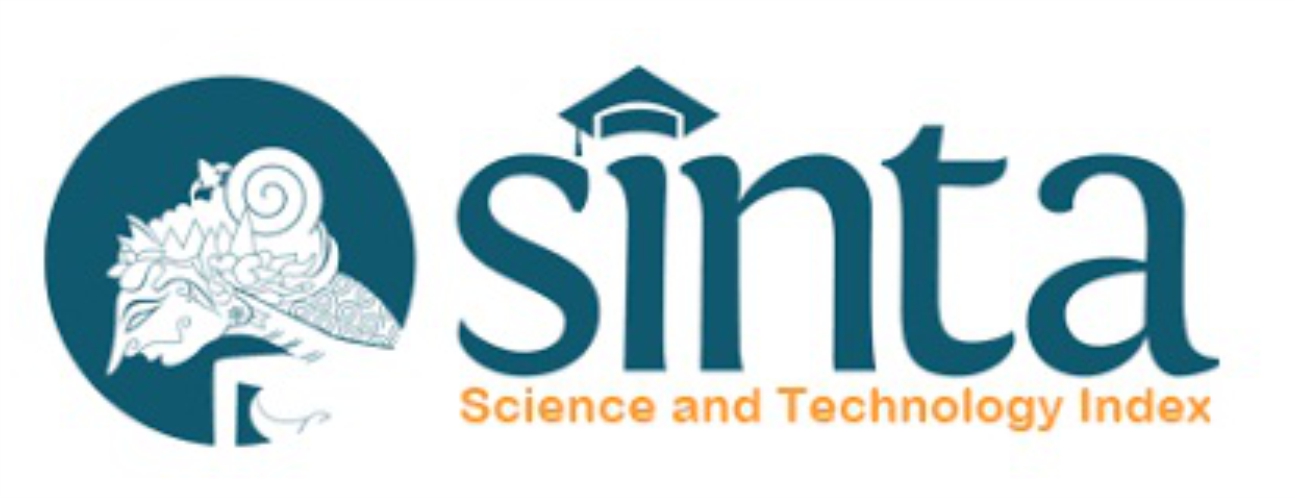THE EFFECT OF ADMINISTERING RHIZOME EXTRACT OF CURCUMA (Curcuma Xanthorrhiza Roxb.) AT VARIOUS DOSES ON THE THICKNESS OF VAGINAL EPITHELIUM IN MICE (Mus Musculus) EXPOSED TO MSG
Abstract
The usage of Monosodium Glutamate (MSG) as flavour enhancer in food is increasing and has reached alarming condition. Excessive consumption of MSG results in the formation of a number of free radicals in the body and affects the function of hypothalamus. A disturbed hypothalamus results in the decline of estrogen levels, and in turn, this estrogen deficiency causes a decrease in vaginal epithelial proliferation in which epithelial cells become thinner. Giving antioxidants might help to address these problems. One of the plants that is rich in antioxidant and grow in mass in Indonesia is curcuma. This study is aimed at analyzing the effect of giving curcuma extract (Curcuma Xanthorrhiza Roxb.) with varying doses on the thickness of vaginal epithelium in mice that are exposed to MSG. The research design employed in the study is true experimental posttest only control group by using 5 groups, namely: K1 (CMC-Na), K2 (MSG), P1 (MSG + curcuma rhizome extract dose of 0,4mg/gr BW), P2 (MSG + curcuma rhizome extract dose of 0,8mg/gr BW), P3 (MSG + curcuma rhizome extract dose of 1,2mg/gr BW). Vagina of each mouse was taken and studied to measure its epithelial thickness by using a 40x magnification on Olympus micrograph microscope. Data were then analyzed using One Way ANOVA. The results show that there is no significant difference in the thickness of vaginal epithelium in each treatment (ρ-value 0.341). Therefore, it can be concluded that the extract of curcuma rhizome does not have a significant influence on the thickness of vaginal epithelium in mice that are exposed to MSG.
Keywords : MSG, Curcuma Xanthorrhiza, epithelium, vagina.
Full Text:
PDFReferences
Depkes RI. 2008. Riset Kesehatan Dasar (Riskesdas) 2007. Jakarta: Badan Penelitian dan Pengembangan Kesehatan Departemen Kesehatan, Republik Indonesia.
Farombi EO., Onyema OO. 2006. Monosodium glutamate-induced oxidative damage and genotoxicity in the rat: modulatory role of vitamin C, vitamin E and quercetin. Human & Experimental Toxicology, 5(25), p. 251-259.
Giacometti T. 1979. Free And Bound Glutamate In Natural Products. In: Glutamic Acid:Advances In Biochemistry (Filer, L.J., Garattini, S., Kare, M.R., Reynolds, W.A. and Wurtman, R.J., eds). New York: Raven Press. p. 25 – 34.
Halliwell, B., 2007. Free Radicals in Biology and Medicine. Fourth edition. Oxford University Press. Chapter 2 and chapter 3, p.42-72.
Kinsella, J.E., Frankel, E., German, B. and Kanmer, J., 1993. Possible mekanisme for the protective role of antioxidants in wine and plant foods. J Food Technology. Vol. 4, p. 5-89.
Masuda T., Isobe J., Jitoe A., Naktani., Nobuji. 1992. Antioxidative curcuminoids from rhizomes of Curcuma xanthorrhiza. Phytochemistry, 31(10): 3645-3647.
Megawati D., Sutarno., Listyawati S. 2005. Siklus estrus dan struktur histologi ovarium tikus putih (rattus novergicus l) setelah pemberian monosodium glutamat (msg) secara oral. J. Biosmart, 7 (1): 47-52.
Prana, MS. 2008. The biologi of temulawak (Curcuma xanthorrhiza Roxb.). Bogor (ID) : Biopharmaca Research Center Bogor Agricultural University. Hal. 151-156.
Rao, MNA. 1995. Antioxidant properties of curcumin. International symposium on curcimin phannacochemistry (ISCP) Yogyakarta (ID) : Fakultas Farmasi Universitas Gajah Mada bekerjasama dengan The Departement of Pharmacochemistry Vrije Universiteit Amsterdam.
Rosidi, A., Khomsan, A., Setiawan, B., Riyadi, H., Briawan, D. 2014. Potensi Temulawak (Curcuma xanthorrhiza Roxb) Sebagai Antioksidan. Prosiding Seminar Nasional Hasil-hasil Penelitian dan Pengabdian
Septadina, Indri Seta. 2014. Pengaruh Monosodium Glutamat Terhadap Sistem Reproduksi. Seminar Bagian Anatomi. Fakultas Kedokteran Universitas Sriwijaya.
Sidik., Mulyono MW., Muhtadi A. 1992. Temulawak (Curcuma xanthorrhiza Roxb). Jakarta (ID): Yayasan Pengembangan Obat Bahan Alam Phytomedica.
Stehle P. 2007. Consensus meeting:monosodium glutamate-an update. European Journal of Clinical Nutrition, 61:304-313.
Sutarno., Megawati D., Listyawati S. 2005. Estrous cycle and histologic structure of rat’s (Rattus norvegicus L.) ovaries by oral administration of monosodium glutamate. J Biosmart, 7(1)47-52.
Tay, JI., Rutherfor., Killick., Maguines, SD., Patridge., and Leese HJ. 1997. Human tubal fluid: production, nutrient composition and response to adrenergic agents. Human Reproduction, Vol. 12(11), p. 2451-2456.
Trentini, botticelli A. 1990. Effect of Monosidium Glutamate on The endrocine Glands, and Reproductive Function of The Rat, Fert. Steril, 25, : 478-483.
Umami, Riza., Made, Pande., Winarsih, Sri. 2014. Pengaruh vitamin C dan E terhadap histology tuba fallopii pada tikus yang dipapar MSG. Jurnal Kedokteran Brawijaya, vol. 28(2), p. 63-67.
Wahyuni, E.D., Situmorang, C.C., Dwijayasa, P.M. 2014. Combination of vitamin C and E modulated monosodium glutamate-induced endometrial toxicily in female wistar rats, Asian Pacific Journal of Reproduction, vol. 3(2), p. 106-109.
Walker ., Lupien . 2000. The safety evaluation of monosodium glutamate. Journal of Nutrition, 130:1049-1052.
World Health Organization (WHO). 1999. Monograph on selected medicinal plant. Vol 1. Jenewa: WHO.
DOI: https://doi.org/10.18860/jip.v2i1.4249
Refbacks
- There are currently no refbacks.
Copyright (c) 2017 Ria Ramadhani Dwi Atmaja
© 2023 Journal of Islamic Pharmacy













